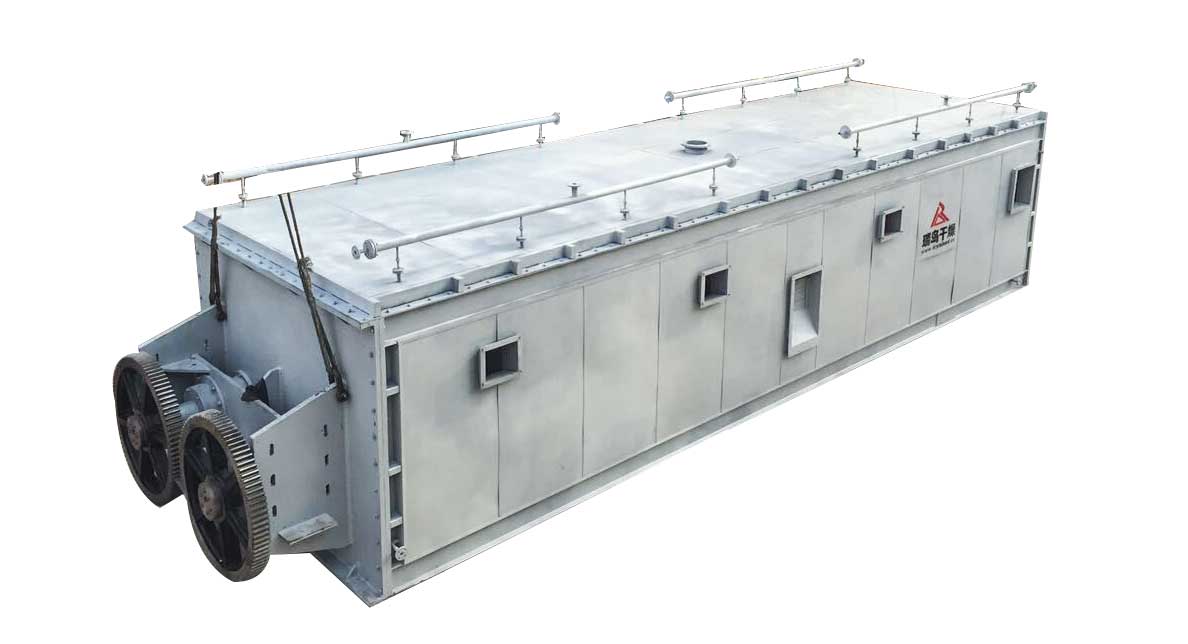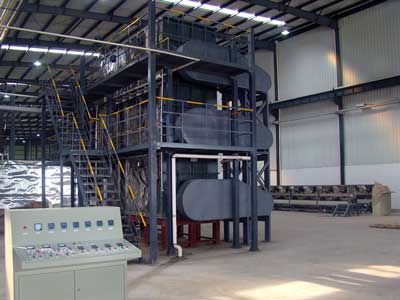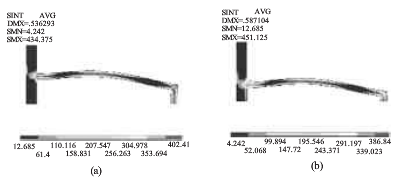Hollow paddle dryer is a type of horizontal stirring dryer. Because the inner hollow stirring blade is similar to a boat paddle, it is called a hollow paddle dryer. It is more suitable for granular materials, powdery and paste materials drying, so the use range is still very wide, in the process of use due to various factors, will reduce the life of the hollow paddle dryer.
First, the factors affecting the life of hollow blade dryers
In order to improve the service life of hollow blade dryers, it is necessary to meet certain requirements. Only when these are met, not only the life can be improved, but also the work efficiency can be improved.
1.Use environment
The use environment of the hollow paddle dryer should be indoors, protected from direct sunlight, and not exposed to wind and rain, and the voltage must meet the normal use of the dryer.
2.Part inspection
Also check whether the various parts of the hollow blade dryer are installed properly and whether they can work normally. In particular, pay attention to check whether the lubricating oil and the inlet are smooth and the outlet is closed.

3.Test run
To carry out trial operation and start the motor in dry running, the blade rotation must meet the specified requirements, and there must be no abnormality, vibration and noise in the blade operation.
4.Materials
The humidity of the material must be controlled, it must not be too wet, and the material must not be doped with foreign materials, especially hard-shaped foreign materials, to prevent damage to the hollow blade dryer by the foreign materials, and the amount of dry materials must be controlled. Do not put too much or too little material into the dryer to dry it, and put it according to the workload of the dryer.
In addition to satisfying the conditions to increase the service life, we can also improve the life of hollow blade dryers through correct and normal use.

Second,the correct use of the dryer
1. When using, drain the condensate in the steam pipe first, and then close the shut-off valve.
2. After that, turn on the air switch of the electric control cabinet to start the circulating fan of each heating chamber.
3. When the temperature in the drying room reaches 145 ° C, set the switch of the speed control motor controller to the “ON” position, and then turn the speed control knob clockwise to bring the pointer to the required position. At the same time adjust the tightness of the conveyor chain, and then start feeding the material to the dryer and drying it.
4. It is also possible to control the humidity in the drying room by adjusting the angles of the inlet and exhaust air valves, so that the materials can be dried to a good state.
5. When all the materials leave the dryer, you can close the steam supply shut-off valve, and then turn off the fans later. Turn off the main drive, then turn the speed control knob counterclockwise to the zero position, and the controller switch is set to the “off” position.
If you want to increase the service life, the correct method of use is also very important, so you must use it according to the instructions to ensure normal work and not cause great wear to the machine. In addition to satisfying the conditions and correct use, maintenance is also very important. Only with good maintenance can the dryer work longer.
Third,precautions for dryer maintenance
1. Before the work is carried out, a comprehensive inspection of each component shall be carried out, and after the work, it shall be inspected to see if there is a fault, and once it is found, it shall be resolved immediately to prevent accidents during use.
2. Pay attention to the delivery of materials during the work, and do not allow overpressure or overload operation.
3. Pay attention to the condition of the bearing, and stop the repair once the problem is found.
4. Pay attention to the use of lubricating oil to prevent problems during use due to lubrication work. Add lubricating oil and pay attention to dust prevention.
5. Clean after use to prevent the inside of the dryer from being corroded and rusted due to uncleanness, especially the door seal strips are cleaned to prevent aging and affect the service life.
6. Periodically check and maintain when not in use for a long time, and clean it well. When cleaning, pay attention not to use a liquid with strong acid and alkaline strength. After cleaning, you should pay attention to dry the water. To prevent corrosion and rust.
The above is all about increasing the life of hollow blade dryers. In fact, we must pay attention to meet the conditions and requirements of hollow blade dryers. In addition, we must operate the dryers correctly to prevent injuries caused by incorrect use. To increase the service life, regular maintenance is required.

